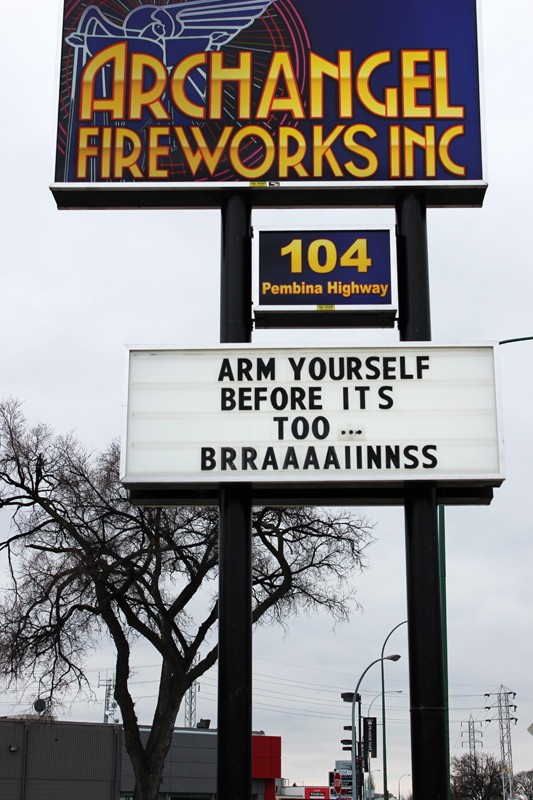What’s in a sign?
Going the extra mile to get attention can backfire
Driving down most commercially zoned city streets is like reading the phonebook.
Countless boring signs relate information of no particular importance. In reality, it’s simply too much to absorb and most signs go largely unnoticed.
Which makes it all the more exciting when a sign really stands out.
“We used to be very practical with our sign,” says Leiah Beck, consumer sales manager at Archangel Fireworks. “Since we started putting funny things on our sign, people mention it all the time.”
Beck, along with Archangel’s general manager Candice Mitchell, says writing the signs is a collective effort in the office. But it’s an effort that pays off.
“People call us sometimes just to say, ‘I saw your sign and it made me laugh,’” says Beck.
However, all this extra attention does not come without some controversy.
Last May during the Victoria Day long weekend, Archangel ran a royalty themed sign in honour of Queen Victoria. It read, “Quit acting like a queen and blow something up!”
Some people misinterpreted the message as being homophobic and Beck and Mitchell received some angry phone calls.
“We can’t please everyone all the time,” says Beck.
“ People call us sometimes just to say, ‘I saw your sign and it made me laugh.’
Leiah Beck, consumer sales manager, Archangel Fireworks
Mark Wilcoxson, senior pastor at Bethesda Church on Grant Avenue, knows all about the potential danger of small signs and limited message space.
“It’s relatively rare, but I have from time to time gotten complaints,” Wilcoxson says of the church’s highly visible sign. “‘How could you say that? You shouldn’t say that.’ Something like that. It obviously provoked thought.”
While Wilcoxson does sometimes choose funny messages, one of the signs that drew complaints dealt with a serious topic: abortion.
“It’s forced me to be more clear and more concise and more precise,” says Wilcoxson.
But even though the messages are in danger of being misread, Wilcoxson says that they still fulfill his main desire for the sign: to provoke thought and discussion.
Wilcoxson hopes that having a meaningfully provocative message, be it humorous or not, will at the very least give people something to think about on the drive to work.
“We see the sign and its content as a stewardship,” says Wilcoxson. “We could put a bunch of stuff up there that would be provocative, but it wouldn’t be true or helpful.
“Our sign is a huge identifier for our church.”
For Wilcoxson the sign is an important way to communicate with the community. While the same is also true at Archangel, their humourous signs also indicate something about the people who work there.
“To work in fireworks takes a special kind of person,” says Mitchell. “You need to have a sense of humour to work as hard as we do.”
Published in Volume 66, Number 12 of The Uniter (November 17, 2011)







